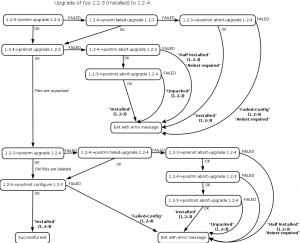 When you start your journey with Debian, you tend to have lots of questions. You’ll find some answers in various documentations but there always are remaining questions. Those can be asked on various support channels:
When you start your journey with Debian, you tend to have lots of questions. You’ll find some answers in various documentations but there always are remaining questions. Those can be asked on various support channels:
- on mailing lists (debian-user@lists.debian.org for the English-speaking one);
- on IRC (channel #debian on irc.debian.org);
- on questions & answers websites like ask.debian.net;
- on web forums like forums.debian.net;
- on every other places where Debian users hang out together (on a booth during a conference, during an install party of a Linux User Group, etc.).
Those are the places where you can also start your journey as a Debian contributor… instead of asking questions, you just have to answer questions of other users! Let me share some advice if you want to do some user support.
User support is difficult…
It’s not always an easy task. Some users are more skilled than others and there might be difficulties related to the language, English is not always the native language of a user who asks a question in English.
Be respectful and courteous when you answer user questions, even if they made mistakes. You’re effectively representing Debian and you should give out a good image of the project. If you don’t have the patience or the time needed to do a good answer, don’t reply and let someone else take care of this user. I invite you to read (and follow!) the Debian Community Guidelines.
Avoid RTFM answers, instead you should show the users how they could have found (alone) the solution to their problem. We don’t want to scare people away, we want to grow our community.
But it’s also rewarding
In some cases, the problem reported by the user will be a real problem and you’ll have an opportunity to file a good bug report, thus helping to improve Debian for everybody.
Often, you don’t even have the answer to the user’s question. But you’re more skilled than him/her to do researches on the web, or you know of a good documentation that might contain the relevant bits of information, in any case you’re doing further research to help this user. In this process, you also grow your own skills since you’re learning stuff that you didn’t know yet.
At least that’s how I learned many things during my first year in the Debian community… there’s no reason why you couldn’t learn lots of stuff that way, in particular if you also read the answers of other skilled people on those channels (it takes a bit of training to learn who are the skilled people though).
I still believe that doing user support is one of the best ways to join the Debian community and to start contributing. It helps you to grow your skills, and to slowly progress from “average user” to “advanced user”.
If you want to start contributing to Debian, click here to subscribe to my newsletter and get future updates for new contributors. You can also follow me on Identi.ca, Google+, Twitter and Facebook.


